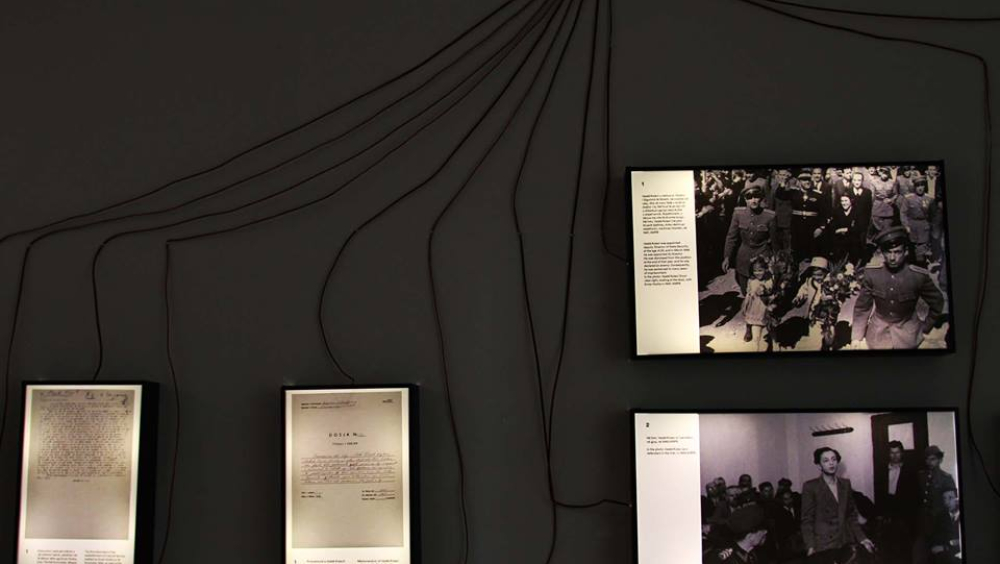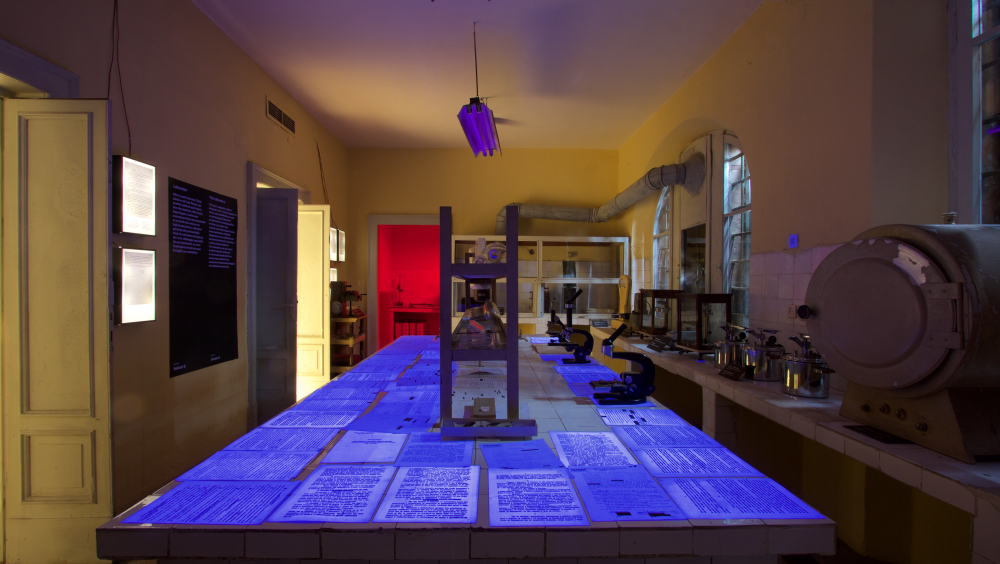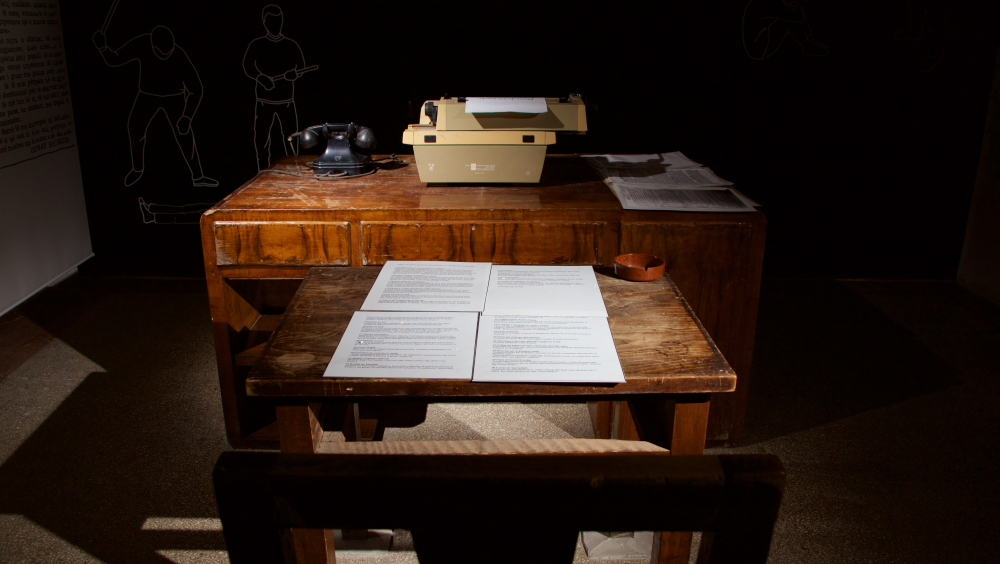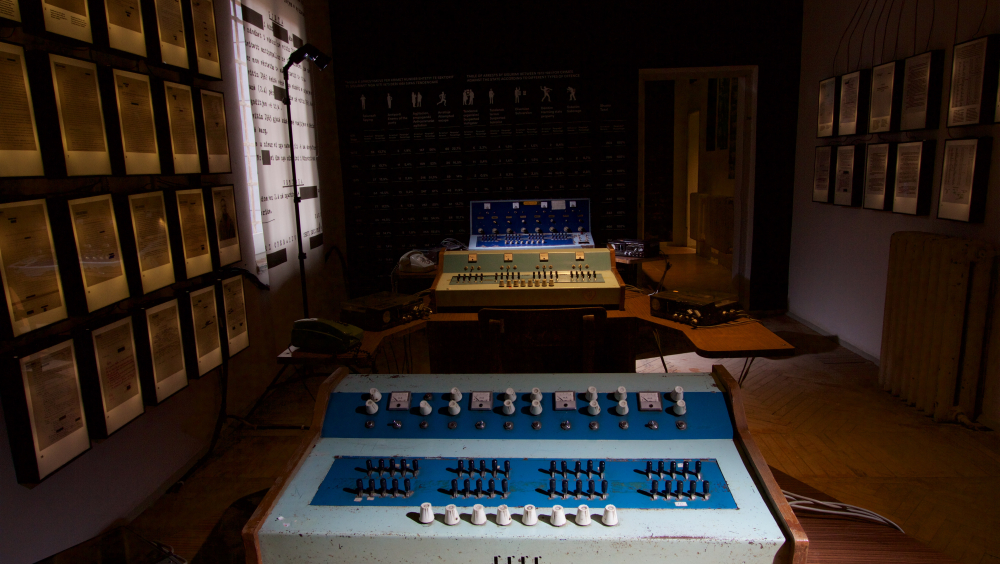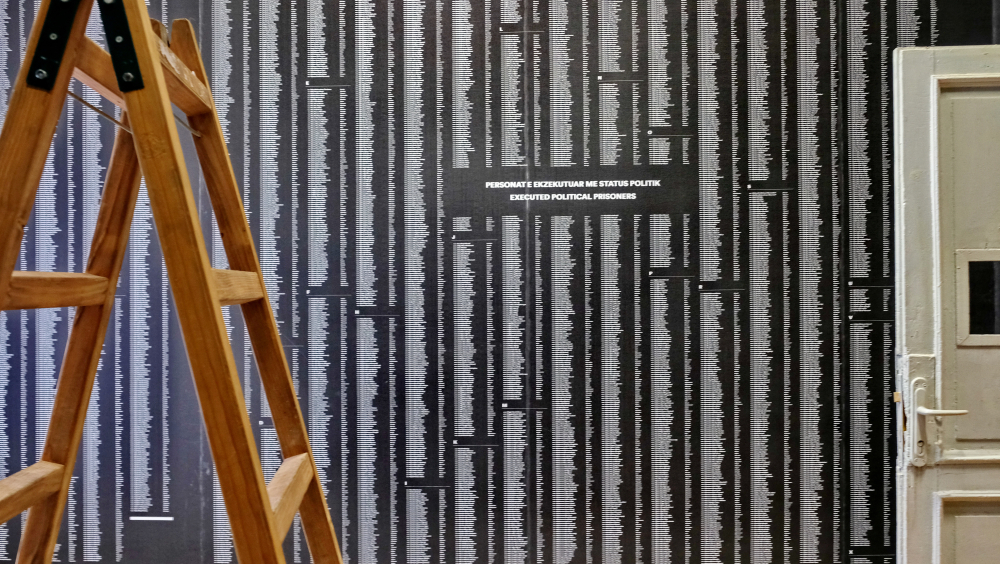The Talking Walls
One among a number of historic locations that are brought back to Albanian public consciousness, the House of Leaves is already an iconic creature formed by a half-forgotten past and a wide-open future.
Until recently, this unobtrusive house in the middle of Tirana, Albania, served as the headquarters of the Sigurimi, the secret service agency, operating throughout the long dictatorship of Enver Hoxha.
Its location was crucial in the geopolitics of the city, for it had the “normal” appearance of a private villa, yet it was a sophisticated technical branch of government. The transformation of this “House” into a site of memory required delicate interventions. The derelict condition of the house is itself an integral part of its character, a kind of historic tattoo, a deeply etched condition no one can quite comprehend today.
The House of Leaves’ walls have heard too much, now they are talking…
The House of Leaves transformation project, which was codified under the name "Gjethi" (The Leaf) in the State Security Documents, was initiated by the Ministry of Culture in 2014 and supported by a multidisciplinary team of historians, associations of victims, institutions, engineers and craftsmen from different countries. The public debates accompanying its opening and that still persist have to do with the difficult communist legacy.
Through a rich and authentic collection of espionage devices hidden in it, through numerous archive documents, film evidences, and statistics or studies, the museum shows the important, repressive, frightening and controlling role of the Sigurimi (State Security), which influenced the 45-year longevity and rule of the communist regime in Albania.
The building that was intended to bring forth new life but instead took the lives of many people for years, now stands at the forefront of an important mission: to improve our lives, especially those of the younger generations, through education and preserving collective memory.
In 2014, the working team visited the House of Leaves for the first time, they were allowed just to look, no pictures, no touching and so many doors still remained locked. Water penetrated through the damaged roof, giving a sense of lugubrious decay as if time had stopped functioning.
It was a fundamental decision to take, either hide these wounds, pretending they never existed, or expose them as the tattoos of history.
The team immediately felt the urge to open every space to the public and to allow the house to speak. They asked that nothing be remove, literally nothing, not even papers, drawings, nor of course hundreds of pieces of technical equipment.
The house was treated with care, stitches were applied where necessary, the incongruity was revealed and passages were opened and we came to see how uncomfortable memories emerge.
The House of Leaves was and remains a labyrinth of rooms, with all the traces of its transformation from a Maternity Clinic to a top-secret place of surveillance, it is full of breaks, scars and unexpected places.
This was the very beginning of the Museum; just to exhibit these materials was not enough, as everyone wanted to know what had happened there. The team spent two years to study the equipment, its provenance, the time of acquisition and use. They relied on documents from the Archives, patiently matching mute objects with written documents. They dug into the photo and film archives, so as to be able to tell the story of the victims to whom this museum is now dedicated. The museum have the courage to show in its exhibition the files of the collaborators of the Secret Services during the communist regime and the faces of the main persecutors. There were used statistics, data, graphics and texts printed on the walls, on the curtains and on many other surfaces in order to give a voice to the house letting the voices of the people be heard.
The most telling aspect of the House from the current point of view is its multi-layered condition. Whether from the sidewalk or from its interior, the building reveals barriers and divisions, demarcations and thresholds of different vintage and purpose, all of which transform it into a strangely hollow and subtly shrouded object. By the simple act of opening the Museum and its grounds to the public, the half-forgotten, half-feared conditions of the past are peeled away, leaving one to reckon with a disconcerting present.
The museum actually puts more emphasis on the consequences of tapping than on the curiosity of the tapping method. In addition to the sophisticated equipments of interception and to the exposure of collaborators' files, it highlights the loss of life, imprisonment, deportation, social and professional degradation. The museum uses statistics, data, graphics, and texts on the walls, curtains, and many other areas to give a voice to the house, but at the same time leaving people's voices heard, the stories of the victims to whom it is dedicated.
The museum is and will continue to be focused on the young generation. Explaining the differences between democracy and dictatorship and sensitizing young generation in this respect is one of the major challenges to the Museum and other institutions in the process of revisiting the past. We believe that: The better we understand dictatorship, the better we can shape democracy.
The National Museum of Secret Surveillance "House of Leaves" has the potential to improve the processes of transitional justice, relying on all parties working together to a greater benefit: moral justice and preventing the repetition of dictatorships. The museum, using all the museum tools and presenting different perspectives, gives a valuable contribution to the current discourse on the past, the recognition of the facts, the restoration of the dignity of the victims, the encouragement of open debates between past injustices by providing a place for reflection. By focusing its activity mainly on the younger generation, the museum aims to promote an active and consciously engaged citizenship, freedom and inspiration as the best way against the abuse of human rights, to stop the abuse before it starts. This can be a very important direction in a transitional society.
The National Museum of Secret Surveillance, "House of Leaves", deals with a difficult and contested past. It encourages the dialogue with and among the citizens about the past, the present and the Albanian future.
*Organizes workshops, roundtables, debates, exhibitions in order to educate generations, make them deal with the issues of the past, encouraging them to become active citizens in decision-making on the political and social issues that protect human rights.
*Contributes to the preservation of collective memory, developing activities dedicated to personalities that were persecuted during the Albanian communist regime or commemorating significant events during this regime.
*Participates and collaborates with the foreign and Albanian museum network, by sharing and obtaining the best practices that focus on preserving collective memory. “House of Leaves” is committed to providing educational opportunities for all generations and types of audiences but especially focussing on the young generation. From workshops, lectures, forums, exhibitions, printed materials, periodic magazine, all visitors can take a deeper experience into the history of Sigurimi.
The museum runs several education programmes. Some involve former political prisoners to pass on the memory of persecution to the younger generation. In other programmes, artists encourage students to create literary texts, paintings, films and installations to express what they have seen in the museum. The museum also organises training for history teachers and cooperates with students of history, of cultural heritage or languages who work as volunteers.
The museum project aims to promote those human values that were denied and fought during the communist dictatorship in Albania. Freedom of thought, tolerance among people and the promotion of democracy are just some of them
